The purpose of bass traps is to dampen and reduce the resonance of low-frequency noise such as bass.
Bass builds up noticeably in corners, particularly where walls meet floors, ceilings or another wall (more on this later), so they are typically used in the corners of rooms such as recording studios, concert halls and cinemas where sound quality is important.
You can buy bass traps for between $40 – $500, however if you want something that is custom made for your room without a custom price tag to match then making one yourself is your best option.
How Bass Works
Bass is any sound which consists of a deep low-frequency sound which operates in a range between 16 to 256 Hz.
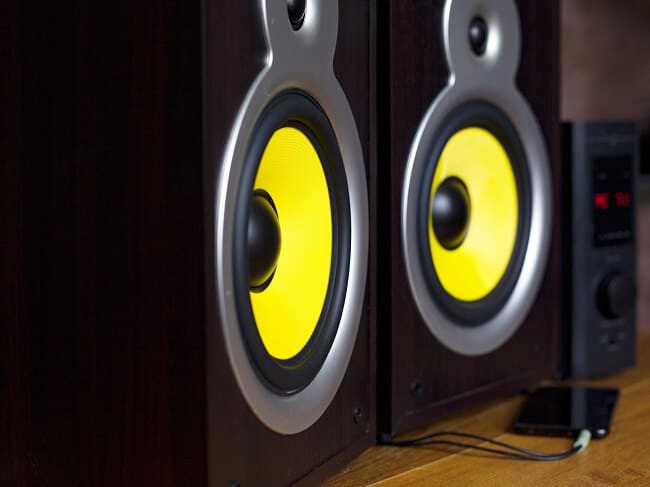
The sound waves which create the low-frequency noise are sparsely separated out, at sufficient volume this means you can sometimes feel a low-frequency wave passing through you.
What Are Bass Traps?
The purpose of bass traps is to turn low-frequency sound energy into heat, they do this by covering corners where bass noise is likely to resonate.
There are two types of bass trap:
- Resonant
- Porous
Resonant bass traps come in the form of a stiff panel which resonates at a certain frequency to dampen bass, these need to be mechanically tuned (extremely difficult to do yourself!) in order to work effectively.
Porous bass traps are made from porous materials (hence the name) such as insulation foam or mineral wool, typically with a timber frame, they absorb and dampen bass preventing it from reverberating around in the corners of a room.
- Great solution for professionals and hobbyists looking to diffuse bass reverb Made in USA
- Measures 12" in height, and 6" in width. About 8" across face of trap. Color: Charcoal
- Eliminates Standing Waves And Flutter Echoes ; Reduces Unwanted Reflections Dampens and diffuses mid to low frequency sound waves inside of a room to minimize interference, Increases increasing sound...
Above are some porous bass traps, these are relatively cheap and can be stacked up to cover a full corner. Click image to view on Amazon.
Porous bass traps are much easier to make yourself because their absorption range is very broad and they don’t resonate so they don’t require mechanical tuning.
Be aware bass traps shouldn’t be used for soundproofing a room, they won’t stop sound from escaping a room however they will help sound inside the room become much clearer and easier to listen to.
They are commonly used alongside sound diffusers and sound absorption panels.
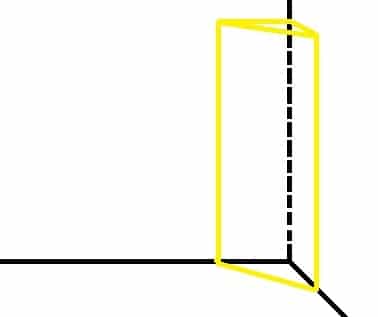
Below we talk you through how to build a porous bass trap.
How To Build A D.I.Y Bass Trap
You will need:
- A measuring tape
- A wood saw
- A hammer (or screwdriver)
- Nails (or screws)
- Rockwool (or another insulant)
- An insulation saw
- Plenty of wooden planks
- A sheet to wrap it in (camira fabric is a popular choice but a nice bedsheet can also work)
- A stapler
Building a bass trap doesn’t need to be complicated, in fact it can be very simple.
In this guide we will talk you through how to custom build a triangular framed bass trap which fits into the corner of your room, follow the steps below:
1. Measure Up
First of all measure the length of the corner that you need to cover so that you know how much area your bass trap, or bass traps, need to cover.
When measuring up be aware that the most important corners to deal with first are your wall to wall corners (i.e the 4 corners of your room). If after installing corner bass traps the sound is still not satisfactory then you can add ceiling to wall and potentially floor to wall bass traps too.
2. Cut Out Your Frame
Don’t worry too much about the width of your frame, the wider it is the more impact it can have however just make sure that the frame fits the room, don’t make it so wide that you can’t open windows or doors!
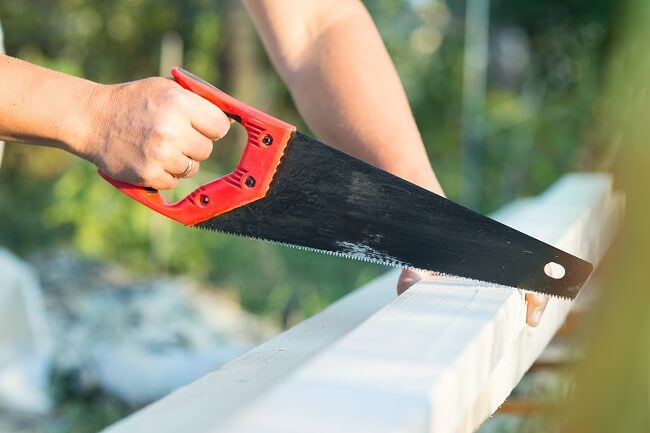
2 Foot or 60cm should be more than enough frame width for most rooms.
If your room has 7ft ceiling and you want to cover the corner with a 60cm wide frame then cut out lengths of wood as follows:
- 3 x 7ft / 213cm (to make installation easier you can halve these lengths to create two Bass Traps which can be fitted one at a time).
- 6 x 2ft / 60cm
- 12 x 1.4ft / 42.4cm
3. Build The Frame
Using nails or screws put the frame together (easier said than done I know). I’ve sketched out a very rough plan for how it should go together.
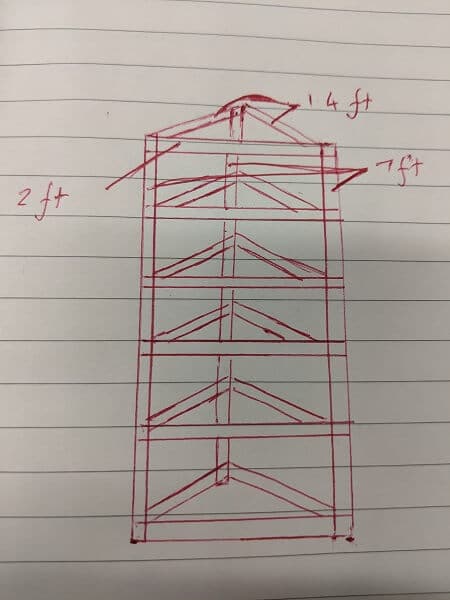
Providing the wood you have used is thick enough and you use relatively small screws then you should be able to fix the 1.4ft planks to the side of them 7footers at an angle. If you find that this is splitting the wood then use pin nails instead (the small ones that are typically used for hanging pictures).
When fitting the 90-degree corner together do so as shown in my sketch below:
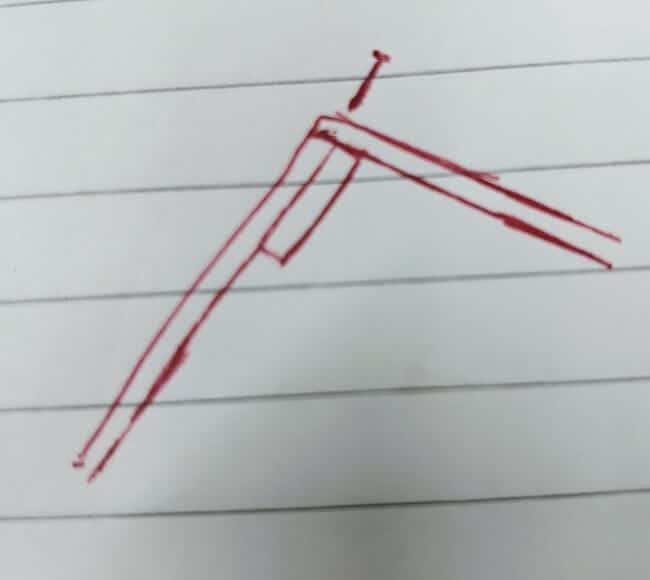
4. Fill It with Insulation
So your frame is built but it’s not going to trap much bass without putting something inside the frame.
The best materials to use for filling out your bass trap are things such as:
- Mineral Wool
- Ceiling Insulation
I recommend using a product like Rockwool, it comes in flat packs which can be cut into shape quite easily using an insulation saw.
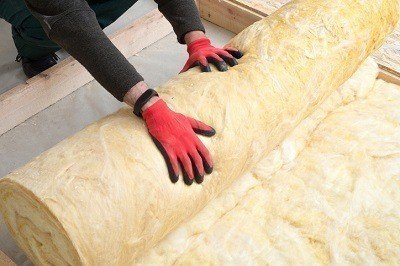
Measure out the size that you need your rockwool triangles to be to fit in your frame then add a few centimetres (as rockwool is most effective when it is compressed a bit). Cut out as many triangle pieces as you need to fill the entire frame and get it filled up!
5. Wrap The Bass Trap
If you’re looking to stick to a budget you can wrap your bass trap with a nice bed sheet, simply pull it tight and staple it on, tucking the loose fabric into the back of the frame.
Regardless of what you choose to wrap your frame with the main rule is to ensure that you can blow through it, if you can then sound can pass through it and your bass trap will work.
A popular option to use for wrapping is camira fabric which will give it a nice professional look.
As an Amazon Associate I may earn a small fee from qualifying purchases at no extra cost to you. This helps us run the site, so thanks for your support!
